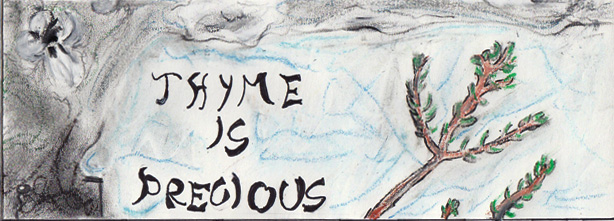Nutrition
Thymus vulgaris is autotrophic or “self-feeding” like most
plants. Food and energy are produced by photosynthesis, a
process in which plants use light energy from the sun and
convert into chemical energy stored in organic molecules like
glucose and molecules. Sunlight is absorbed by the chlorophyll
in leaves. Water and CO2 are also needed for the plant to
complete photosynthesis. Water comes from the roots and is
pulled up through the xylem. CO2 comes from the stoma. The
equation for photosynthesis is:
Light energy + 6 CO2 + 12 H2O yields
C6H12O6 + 6 O2 + 6 H2O
Photosynthesis has two stages: the light
reaction and the Calvin cycle. Both stages occur in the
chloroplast. The chloroplast contains grana, stacks of the
thylakoids. Each thylakoid in in the stack has photosystems that
carries out photosynthesis. The picture below shows a basic
overview of photosynthesis.

The light stage occurs in the space outside of the grana or the stroma.
Light is absorbed by the chloroplast or accessory proteins.
This light excites an electron in photosystem II, energizing the
electron. This excited electron leaves a hole and replaced by an
electron split from a water molecule. The energized electron is
passed to an electron acceptor that transports it to photosystem
I. The electron carrier takes the energized electron from
photosystem I and transfers it NADP + making NADPH. ATP is also
produced. H+ ions build up inside the thylakoid membrane
throughout the light cycle and leave through ATP synthase which
is used in other processes in the plant. Both ATP and NADPH are
used the next step of photosynthesis.
The Calvin cycle, also called the dark stage, is where glucose
is made. Basically, there are three phases: carbon fixation,
reduction, and regeneration. These three phases involve a series
of chemical reaction that form G3P. Two G3P molecules make one
glucose molecule; as a result, the Calvin cycle must happen
twice to make one glucose molecule. Photosynthesis is a good
thing. It takes the CO2 we breathe and changes it back to O2,
which we need.
To read more about how thyme fits into the food chain go to the
Interactions page or to read more about
the life of a plant go to
Reproduction.
